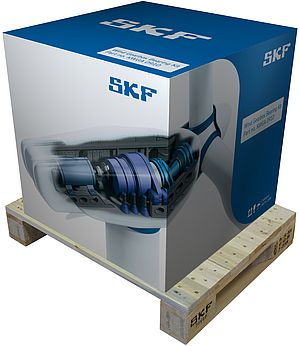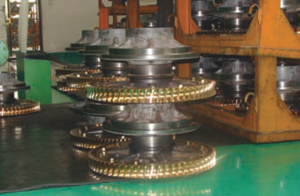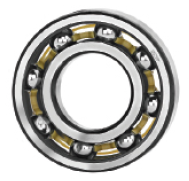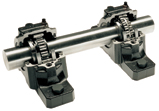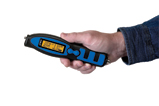Jack-up oil rig drilling platforms, that are designed to float to a location and then have the drilling platform ’jacked up’ off the surface of the sea, one piece of critical equipment is surely the jacking gearbox. Jacking gearboxes provide the power to lower the platform legs on to the sea floor and then lift the enormous weight of the drilling platform high enough above the water so there is no interference to drilling operations from wave motion, even in stormy conditions.
Hyosung Corporation of Korea proudly claims that their jacking gearboxes give“reliability and power”. And SKF are proud to contribute to that assertion by providing 23 bearings in each of Hyosung’s latest designs of gearbox, including the CARB toroidal roller bearing which delivers carrying power in the smallest package.
Any system is only as strong as the key components in the system. If any single components should fail, the entire system fails. It was these thoughts in mind that Mr. Won-Cheol Hong, Senior Designer at Hyosung Industrial Machinery began his project to design a smaller, lighter, more powerful jack-up gearbox for oil drilling platforms.
And one major component in the design are the bearings that support the shafts and gears as they lift the enormous weight of the platform at 45cm per minute. The sheer weight of the platform and the demanding operating conditions mean that minor deflections of the shafts cannot be avoided. And to prevent that they cause premature bearing failure in gearbox applications the bearings selected must be able to accommodate these deflections in all conditions throughout the life of the gearbox. Mr Hong’s final selection included tapered roller bearings, spherical roller bearings and CARB bearings for the very demanding load carrying in the planetary gears. This selection resulted from thorough advanced modeling of the gearbox together with sophisticated bearing life and load calculations, carried out by SKF.
By the time he finished the project Mr. Hong’s design had been selected for the highest award in his company for innovative product development. And today, already more than 500 sets have been delivered for their hard work in the harsh environments of offshore drilling and will be incorporated in new platforms being commissioned in the next few years. The first drilling platform equipped with these gearboxes started drilling off the coast of China in January 2009 and will stay there for 3 years. The oil rig, operated by a USA company, utilizes 54 Hyosung reducers to jack up the drilling platform, having 18 gearboxes on each of its 3 support legs.
Considering the rig platform has a maximum drilling variable deck load of 3,673 tons it is easy to understand why Hyosung and the rig operator consider that such gearboxes need to give ‘reliability and power’. Add to that the fact that the oil drilling platform is expected to be active for 20 years, and so are the gearboxes, then reliability really means reliability. Especially if the operator wants to have efficient and trouble free operation during the anticipated total of 2000 hours period of lifting and lowering of the platform once it is positioned, after the vessel is moved to various drilling sites during those 20 years. The first gearboxes produced have a lifting capacity of 1957kN and a holding capacity of3113kN in normal conditions, extending to 4448kN in severe storming conditions. Later models had a 2446kN carrying capacity with proportionally more holding and severe storming capacities.
While Mr. Hong is very proud of his work in designing the gearbox he says “I am very happy with the technical support I received from SKFin this project. As well as full support from local SKF Korea engineers I was visited by European SKF engineers who had applied CARB bearings in other heavy industry applications such as steel mills, pulp and paper plants and wind turbines. They gave me and my staff the confidence to go further in the development. The use of CARB, and its self aligning ability, allowed us to design low profile gears that are wider, stronger and give greater torque capacity than previous designs. This allowed us to downsize the gearbox with confidence, and this was proven in tests when we loaded the gearbox planetary gears to 3 times the expected loads with no problems. CARB’sability to take up minor misalignments and heavy loads improves the gear meshing and this also improves the gearbox efficiency”.
CARB is a self aligning radial bearing withan inner ring that moves independently of the outer ring, enabling the shaft to move smoothly without inducing axial loads. It therefore accommodates misalignment like a spherical roller bearing and axial displacement like a cylindrical roller bearing. Additionally it carries extremely high loads due to relatively long and barrel shaped rollers.
Because the rollers are barrel shaped, and the inner and outer rings are correspondingly concave and symmetrical, the bearing will always position itself in the raceway for optimum load carrying performance.
The CARB design eliminates the problem of induced axial loads resulting from thermal expansion of the shaft. This enables two major design options; 1. keep the current bearing dimensions and radically increase bearing service life. 2. Downsize and achieve the same or better operational reliability.




